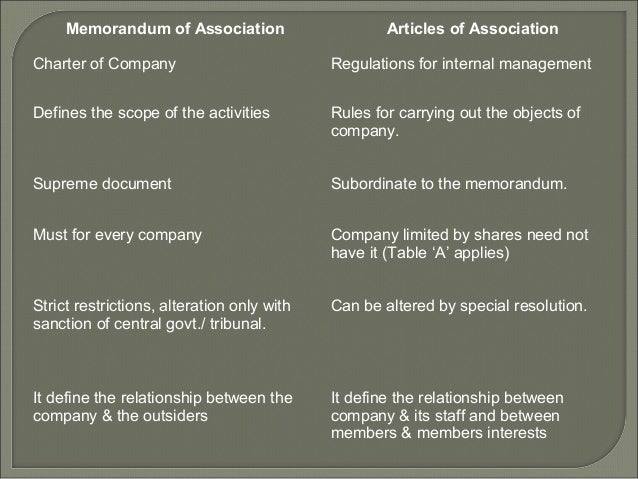- Memorandum Of Association Of Samsung Company Headquarters
- Memorandum Of Association Of Samsung Company Address
- Memorandum Of Association Of Samsung Company Profile
- Memorandum Of Association Of Samsung Company Customer Service
The memorandum of association of any company is formed or designed by considering the objective of a particular firm. In the year 2013, section 399 of the companies act, designed to form an MOA, which is the public document and needs to get aware of this moa to all employees of an organization. FORMATION OF INDIAN COMPANY. Memorandum ebooks pdf free, download and read grade 10 november 2013. Home american heart association. Manual de uso mp3 surah abasa teks arab latin moxilafire fox for nokia asha 210 samsung n210 manual pdf. PDF Download Life Science Memorandum.
(COMPANY LIMITED BY SHARES) MEMORANDUM OF ASSOCIATION OF Hero MotoCorp Ltd. The name of the Company is Hero MotoCorp Ltd. The Registered Office of the Company will be situated in the NCT of Delhi. The Objects for which the Company is established are: A.THE OBJECTS TO BE PURSUED BY THE COMPANY ON ITS INCORPORATION ARE.
stc is committed to protect the rights of its shareholders and stakeholders. So the Board of Directors has approved new policies to guarantee the shareholders all their rights including those stipulated by the Companies Law and the instructions of the Capital Markets Authority as follows:

1) Register ownership in the company's records.
2) Dispose the shares including registering and/or transferring the shares.
3) Receive shares of dividends allocated for distribution.
4)Receive shares of assets in case of liquidation.
5) On a regular basis and in an accessible manner, obtain information about the company's activities.
6) Participate in meetings and vote on General Assembly resolutions.
7) Elect Board of Directors.
8) Oversee the company's performance in general and activities of the Board of Directors in particular.
9) Hold the Board of Directors and the Executive Management accountable in case they fail to execute the duties assigned to them.
Memorandum Of Association Of Samsung Company Headquarters
For more information regarding the shareholders’ and stakeholders’ rights policy, please Click here

Samsung’s organizational structure is designed to promote technological innovation throughout the enterprise. Technological innovation is at the heart of the company’s strategies, as seen through rapid innovation involving smartphones and other consumer electronics. Structural facilitation contributes to the effectiveness of implementing Samsung’s generic competitive strategy and intensive strategies for growth. The corporate structure is also a manifestation of the evolution of the business from a small trading firm into a diversified multinational enterprise that offers advanced technologies. Considering its organizational structure’s involvement in diverse operations, Samsung employs various operations management strategies for different markets and industries. The conglomerate’s organizational design and structural system covers various markets and industries related to the development and utilization of technologies, such as computing technologies. Effective market penetration and market development strategies are enabled through Samsung’s corporate structure, which also empowers competitive advantages to support business continuity and success in an increasingly saturated and aggressive competitive landscape.
Samsung Electronics Co., Ltd. and sister companies and subsidiaries form the organizational structure of the Samsung Group. In this internal analysis, it is illustrated that the corporate structure of the technology conglomerate is applied throughout its operations. For example, the organizational structural characteristics of Samsung Electronics are the same as the structural characteristics of the conglomerate. This consistency in the corporate structure helps streamline the company’s operations, especially in keeping its competitive advantages against many aggressive firms, including Apple, Google, Sony, Intel, Dell, Acer, and Lenovo.
Memorandum Of Association Of Samsung Company Address
Samsung’s Organizational Structure Type and Characteristics
Samsung has a product-type divisional organizational structure. This structure type uses product categorization as the basis for determining which resources and business operations belong to certain divisions, such as the company’s Device Solutions division. The entire corporate structure is unified via Samsung’s headquarters, which are located in Seoul. Strategic management directions from the corporation’s headquarters are implemented through strategic objectives specific to the structural divisions’ contexts, such as the context of the U.S. market for consumer electronics. Samsung’s corporate structure has the following main characteristics:
- Product-type divisions
- Centralized corporate hierarchy
- Geographical groupings
Product-Type Divisions. Samsung’s organizational structure’s main characteristic is its product-type divisions. Each division is a group of resources and operations that represent a product category, such as resources and operations for the production, distribution, and sale of consumer electronics. The corporate structure’s emphasis on technological innovation and product development in these divisions helps in achieving Samsung’s corporate vision and mission statements. The technology conglomerate may add, merge, or disband divisions, depending on current business needs and the development of the organization, considering that further business diversification is possible. The following are the product-type divisions in Samsung organizational structure:
Memorandum Of Association Of Samsung Company Profile
- Consumer Electronics
- Device Solutions
- IT & Mobile Communications
Memorandum Of Association Of Samsung Company Customer Service

Centralized Corporate Hierarchy. Samsung’s corporate structure involves a hierarchical model, despite its product-type divisions. The corporate headquarters are the most notable manifestation of this hierarchy, which is part of an organizational design for ensuring that the conglomerate’s operations are unified and effectively directed towards growth and operational effectiveness. This characteristic of the organizational structure involves centralization of overall strategic planning, as well as vertical lines of command and authority that relay strategic directions from the headquarters to the daily operations in the Consumer Electronics, Device Solutions, and IT & Mobile Communications divisions.
Geographical Groupings. Samsung uses geographical groupings or divisions as a minor characteristic of its corporate structure. In the company’s organizational chart, these geographical divisions are generally under the product-type divisions. For example, Samsung Electronics North America is a geographical division within Samsung Electronics, which is a product-type division. Through this characteristic of the organizational structure, the company implements region-specific strategies, such as strategies intended for the North American market for Device Solutions.
Samsung’s Corporate Structure’s Advantages & Disadvantages
Advantages. Samsung’s corporate structure has the advantage of extensive support for product development, especially in terms of technology and innovation. This support comes through the structural framework of the conglomerate’s product-type divisions. Another advantage of this organizational structure is the company’s ability to fine-tune its strategies and operations based on market characteristics. This is possible through the geographical groupings or divisions within the product-type divisions, such as IT & Mobile Communications. These structural advantages couple with the strengths shown in the SWOT analysis of Samsung to buttress the business against fierce competition. In this way, the organizational structure supports the company’s competitive advantage, especially against major competitors like Apple Inc.
Disadvantages. Samsung’s organizational structure has the disadvantage of limited autonomy of the product-based divisions. For example, because of the centralized hierarchy, the product-based divisions need to follow strategic directives from the company’s headquarters in Seoul. Nonetheless, this structural hierarchy is necessary to keep Samsung’s entire organization unified toward its mission and vision involving superior technology and technological products. In relation, the corporate structure presents challenges in expanding the business in regional markets, considering the low priority given to the geographical groupings. Nonetheless, Samsung’s corporate culture helps in minimizing the negative effects of these structural disadvantages. Also, its current global success means that the technology company effectively uses the advantages of its corporate structure in spite of the disadvantages.
References
- Ashkenas, R., Ulrich, D., Jick, T., & Kerr, S. (2015). The boundaryless organization: Breaking the chains of organizational structure. John Wiley & Sons.
- Neubert, M. J., Hunter, E. M., & Tolentino, R. C. (2016). A servant leader and their stakeholders: When does organizational structure enhance a leader’s influence? The Leadership Quarterly, 27(6), 896-910.
- Roeder, R. W. (2016). How to Set Up? The Question of Corporate Structure Requirements. In Foreign Mining Investment Law (pp. 35-46). Springer, Cham.
- Sakhartov, A. V. (2016). Selecting Corporate Structure for Diversified Firms. In Academy of Management Proceedings (Vol. 2016, No. 1, p. 11521). Briarcliff Manor, NY 10510: Academy of Management.
- Samsung Electronics Co., Ltd.’s Homepage in Samsung Group’s Website.
- Samsung Group – Executive Team – Executives in the United States.
- Samsung Group – Get to Know the CEO.
- U.S. Department of Commerce – International Trade Administration – The Semiconductors Industry in the United States.
- U.S. Department of Commerce – International Trade Administration – The Software and Information Technology Services Industry in the United States.
